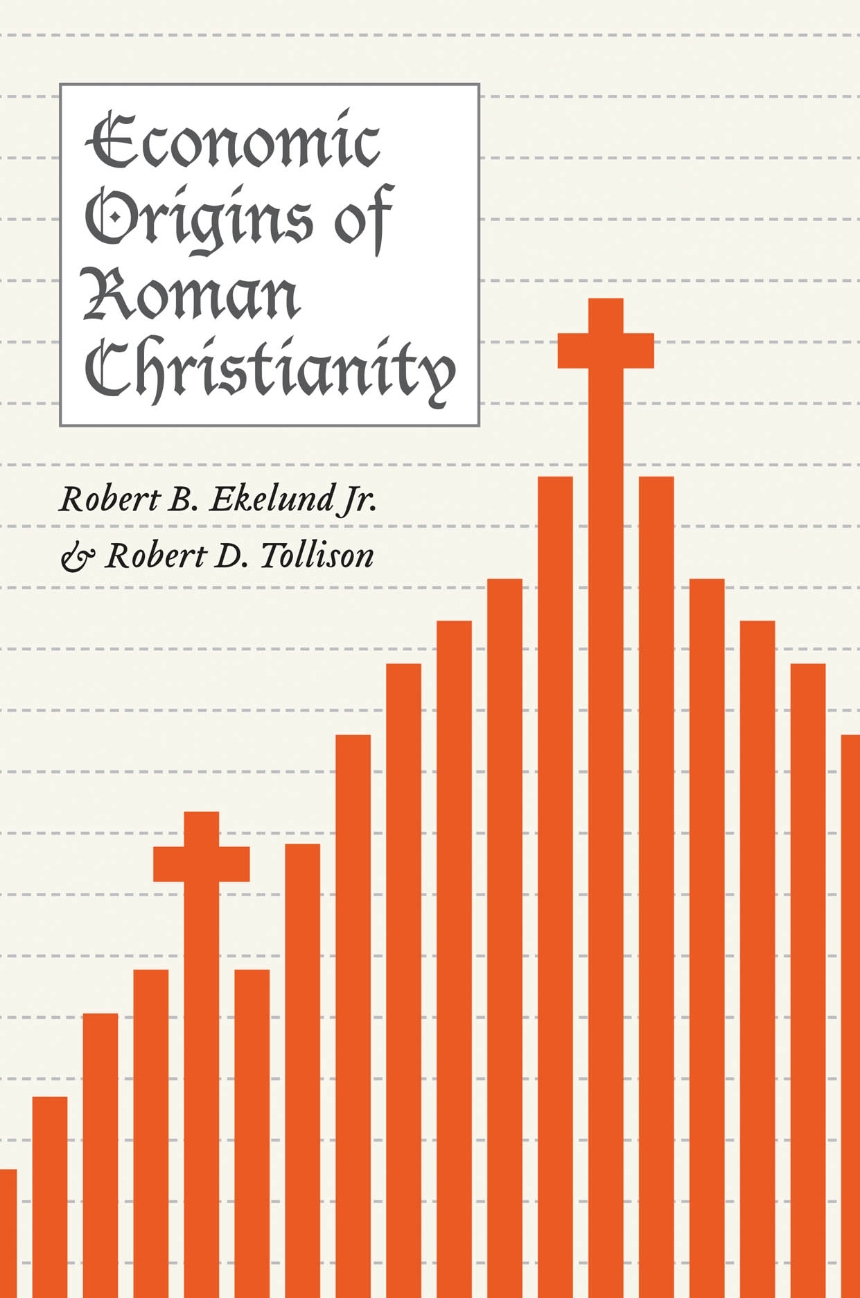Economic Origins of Roman Christianity
In the global marketplace of ideas, few realms spark as much conflict as religion. For millions of people, it is an integral part of everyday life, reflected by a widely divergent supply of practices and philosophical perspectives. Yet, historically, the marketplace has not always been competitive. While the early Common Era saw competition between Christianity, Judaism, and the many pagan cults, Roman Christianity came eventually to dominate Western Europe.
Using basic concepts of economic theory, Robert B. Ekelund Jr. and Robert D. Tollison explain the origin and subsequent spread of Roman Christianity, showing first how the standard concepts of risk, cost, and benefit can account for the demand for religion. Then, drawing on the economics of networking, entrepreneurship, and industrial organization, the book explains Christianity’s rapid ascent. Like a business, the church developed sound business strategies that increased its market share to a near monopoly in the medieval period. This book offers a fascinating look at the dynamics of Christianity’s rise, as well as how aspects the church’s structure—developed over the first millennium—illuminate a number of critical problems faced by the church today.
288 pages | 1 line drawing, 6 tables | 6 x 9 | © 2011
Economics and Business: Economics--History
History: European History
Religion: Christianity
Reviews
Table of Contents
Preface
CHAPTER 1. Roman Christianity: An Evolving Monopoly
Introduction
Aspiring to Monopoly
A Word on Method
The Roman Church as a High Medieval Monopoly
Plan of the Book
CHAPTER 2. Religion, History, and Social Science
Introduction
Adam Smith and Max Weber
Contemporary Theoretical Approaches to the Demand for Religion
Monopoly, Rationality, History, and Religion
Conclusion: Economics and Religious Behavior
CHAPTER 3. Economics of Religious Belief
Introduction
Nature of the Religious Good
Demands and Contracts for the Religious Good
Conclusion: Focus on First Millennium Christianity
CHAPTER 4. Entrepreneurship, Networking, and the Success of Early Christianity
Introduction
Economic Analysis and Early Christianity
Entrepreneurship: Proselytizing the New Religion
Network-Consumption Externalities and Credence Issues
The Adoption of Christianity: The Role of Saint Paul
Conclusion
CHAPTER 5. Constantine and Rome’s Acceptance of Christianity
Introduction
A Theory of the Adoption and Cartelization of Christianity by Rome
Roman Acceptance of Christianity: Economic Factors
The Critical Role of Constantine and the March to Cartelization
Conclusion
CHAPTER 6. The Drive to Church Monopoly Power: Constantine to Charlemagne
Introduction
Economic Theory and Christianity in the Ninth–Twelfth Centuries
Constantine through Justinian and Gregory I: Centuries of Competition and Consolidation
The Frankish Kingdoms, Charlemagne, and the Rescue of the Roman Papacy
Conclusion: The Roman Church circa the Early Ninth Century
CHAPTER 7. Roman Christian Monopoly in the Early Medieval Period
Introduction: The Bumpy Road to Monopoly
After Charlemagne: Breakdowns, Conflict, and Invasions
Competition with Byzantium and the “Great Schism”
Roman Church Monopoly Solidifies
Conclusion
CHAPTER 8. Conclusion: The Roman Church Monopoly Triumphant
Introduction
How the Church Reached Monopoly Status
Roman Monopoly Processes and Market Entry
Does the Economics of Early Christianity Relate to Contemporary Religion?
Appendix The Impact of Saint Paul
Notes
References
Index
